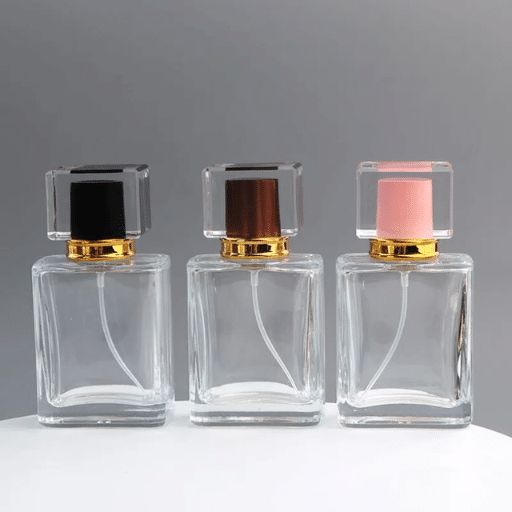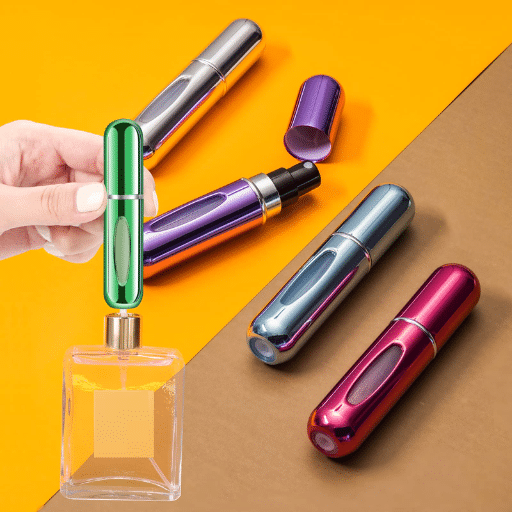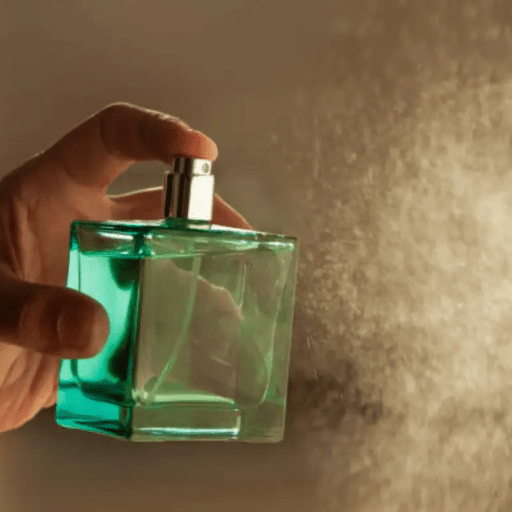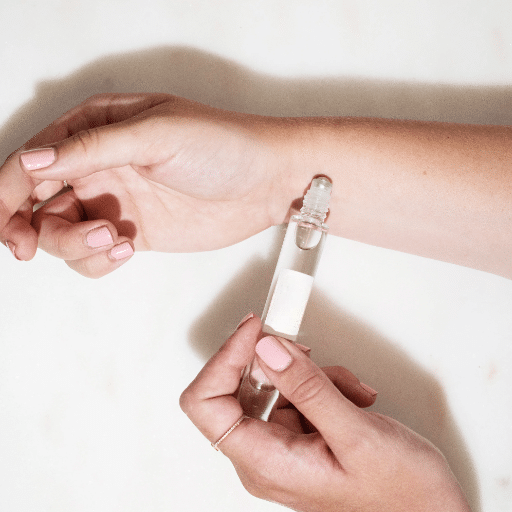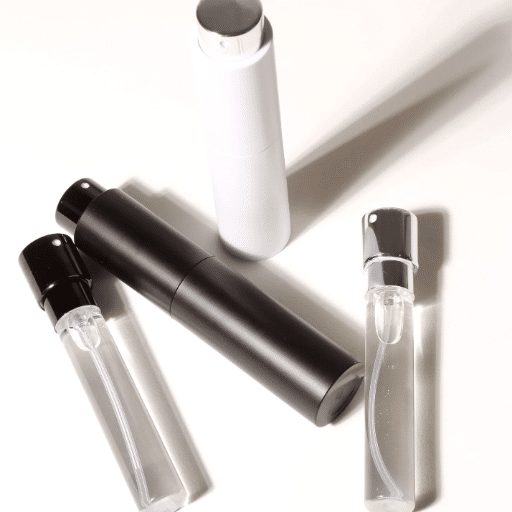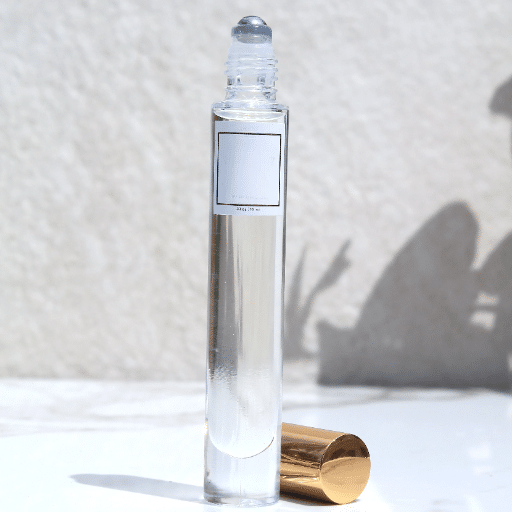The world of fragrance is as much about visual appeal as it has to be about captivating scents. Pink perfume bottles, tinted faintly, with elegantly done designs, have always held a certain charm for perfumers and collectors, alike. Quite akin to how the delicate hues embody refinement, femininity, and a classic kind of beauty, pink bottles transcend mere utility for perfume. They become expressions of style and art. This guide will explore the entrancing world of pink perfume bottles: an exploration of design and olfactory creativity. From those famous silhouettes and colors down to what the bottles stand for, therein lies the accounts to why bottles have always been an enchantment to behold. Whether it is the eternal glow or the ever-so-fascinating contents that magnetize you to hand, this article shall illuminate the multifaceted relationship of beauty, sentiment, and scent. Enter into a world that marries design with the art of perfumery!
Introduction to Pink Perfume Bottles
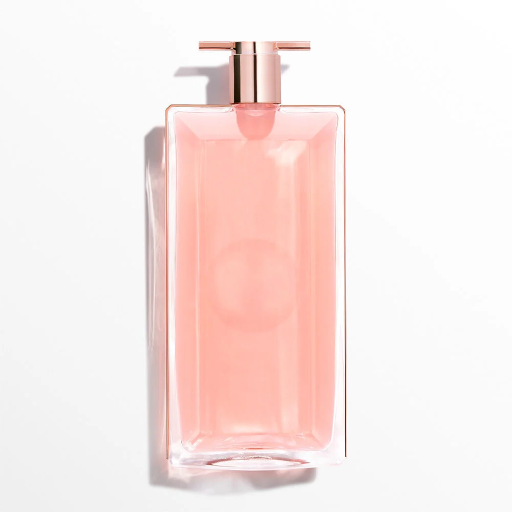
Pink perfume bottles are an artistic creation that begs description as it stands at the intersection of beauty and utility to express what the scent inside it represents. There are many types of designs featuring sleek shapes and soft colors, embracing the idea of sophistication and femininity. Through precise techniques, these bottles ensure that the perfume is kept intact while also elevating the bottle above the mere concept of a container into one of luxury presentation. High-quality materials, great finesse, and detailed workmanship reinforce the perception of refinement and modern design.
The Allure of Pink in Fragrance
For a long time, the color pink has had close associations with romance, tenderness, and femininity, making it a great candidate for use in the fragrance industry. When pink is used to describe fragrance bottles and accompanying marketing materials, the effect created is one of intimacy and elegance that appeal to the emotional side of consumers. Pink shades are commonly associated with floral or fruity fragrance profiles. This thus builds up an expectation for these fragrances to be light, sweet, and delicate experiences. From this viewpoint, the color pink, both in symbolic and literal terms, provides an apt storyline centered on the product, thereby aiding its sale while also emotionally tying with the intended consumer base.
Understanding Eau de Parfum vs. Other Forms
Eau de Parfum puts itself apart from other forms of fragrance due to a higher concentration of aromatic oils: between 15-20% typically. This thereby makes it lasting and potent, unlike Eau de Toilette (EDT) with typical strengths of 5-15% concentration or Eau de Cologne, which even holds a lesser concentration of about 2-5%. This higher oil content of EDP offers it higher longevity while making it vanish, usually after 6-8 hours or more, float over one’s skin and often though less, notwithstanding, a few hours for EDT and comic flaccid gestures for colognes. EDPs are formulated to be rich and somewhat intricate, a big plus if one wants to tastefully take the bold step of scenting his or her presence.
Why Choose a Pink Bottle?
I would select a pink bottle because in many cases, it symbolizes femininity, grace, and sophistication, and as such, is well-suited to representation for many luxury fragrances. Pink bottles are generally linked with floral or sweet scent profiles, which happen to be my favorites. Moreover, it helps my vanity stand out visually, adding charm and elegance. Color pink brings with it some warmth and upbeat vibes, which only serve to amplify the complete sensory experience tied to the fragrance contained in it.
Design Aesthetics of Pink Perfume Bottles
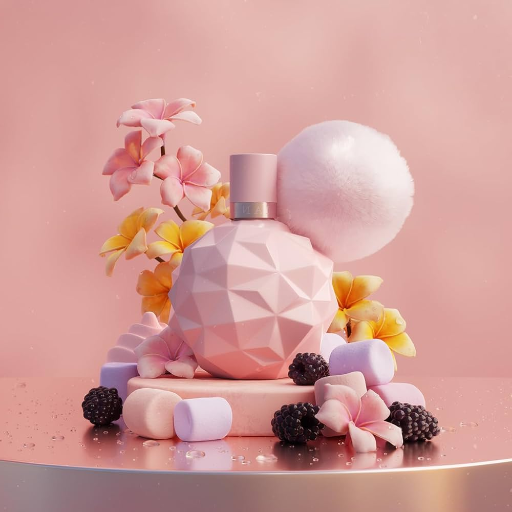
Design aesthetics for pink perfume bottles mainly target emotions aligned with femininity, elegance, and sophistication. A specific pink type tends to be associated with floral and sweet scent profiles, giving a complete sensory experience. Visually, they enhance charm and glamour in personal collections, allowing them to vastly stand out when on display. From the psychological point of view, the color pink emits warmth and positivity; therefore, it gives off its aura toward the product, enhancing the consumer’s perception regarding its quality and intention.
Materials and Craftsmanship
Quality materials and superior craftsmanship are attributes of the finest perfume bottles. These bottles are fabricated from premium materials, which include glass, metals, or ceramics. However, glass is predominantly preferred for its clear nature and for not interfering with the fragrance inside. Metals such as aluminum or brass may be incorporated into decorative or functional portions of the bottle, such as the cap and atomizer. Excellent workmanship entails precise detailing with the final product showing barely evident seams, while still retaining strength. The manufacture of such bottles marries glass blowing with intricate engraving and artistic design concepts so that the end product is more than just an object: it is a work of art. Thus, an attempt is made to complement the selection of quality materials with innovative designs, which is a display of the brand’s commitment to providing the customer with a truly exquisite and timeless item.
Shapes and Sizes: Tall, Round, and More
Fragrance bottle designs are infinite and accommodate both aesthetic tastes and practical considerations. Tall and slender bottles emphasize elegance and verticality and are usually used to describe sophistication or minimalism. Round bottles also enjoy popularity and symbolize balance and softness; they are, therefore, used for luxurious or comforting fragrances equally. Square and rectangular designs evoke notions of structure and modernity and appeal to those who cherish clean, geometric lines. Apart from a variety of shapes, some designers make presentations through abstract or irregular designs to stimulate thoughts around uniqueness and creativity that correspond with niche or artistic scents. Size variation then functions to satisfy various utilitarian criteria from smaller travel bottles to gigantic flacons worthy of display, whose tactics combine to address various overarching demands of different consumers.
Iconic Caps and Decorative Elements
Iconic caps and decorative elements serve to position a perfume bottle as a unit and enhance its visual attractiveness. Caps for many distinguished fragrances are characterized by intricate designs inspired by brand logos, historical motifs, or geometric patterns, thus becoming a declaration of their unique art. Metal, crystal, or polished wood are favored materials for cushioning against the hardness and longevity of life. Additional aesthetic enhancements include embossment, engraving, or the glitter of gemstones, allowing the bottle to serve both as a fancier container and an art-object for collecting purposes. These elements reinforce the brand image while bearing the fragrance’s slightest idea into visual and tangible art.
Fragrance Families in Pink Perfumes
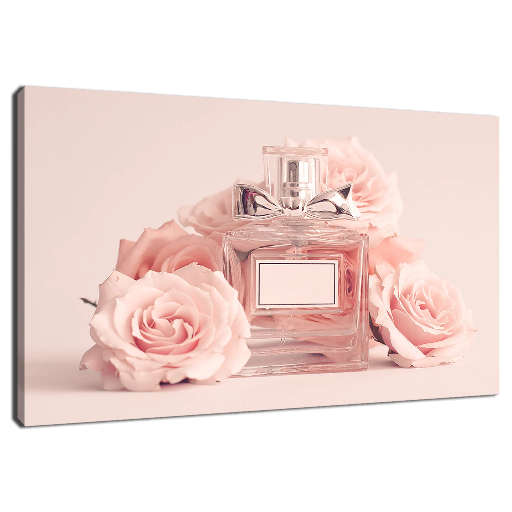
Common pink perfumes include families of fragrance characterized by soft, vibrant, and romantic smell profiles. Floral, fruity, and gourmand are common fragrance families. Floral fragrances predominantly have notes such as rose, peonies, and jasmine, which exude refinement and femininity. Fruity notes of berry, peach, or citrus impart freshness and playfulness, while gourmand notes bring warmth and sweet punch, notable among which are vanilla or caramel. The formulation of these aromas is very deliberate so as to strike a fine balance between sophistication and chattiness. This kind of balance is often attributed to pink fragrances that are barely subtle, yet highly active.
Floral and Fruity Notes
Floral and fruity notes are intricately mixed to create a fragrance that works on a spectrum from airy and free to rich and opulent. Flowers like rose, magnolia, and lily-of-the-valley impart their own signatures, while fruits like bergamot, blackcurrant, and apple infuse a sweet and fresh tang. This beautiful concoction is further balanced with a selection of complementary middle and base notes that promote longevity and olfactory harmony so that it caters to one’s mood, taste, and occasions.
Gourmand and Vanilla Undertones
Gourmand fragrances have edible notes that conjure images of dessert-like aromas: chocolate, caramel, and coffee. In such fragrance families, vanilla is often featured, lending creamy nuances of sweetness and warmth to complement the richer, indulgent aspects. They carry the image of comforting yet luxurious scents- for those who love an aroma that welcomes sophistication. A vanilla molecule quite interestingly, holds not just a sweet fragrance but also the ability to cling on as a fixative basis for other scent combinations. When paired with other gourmand notes, it offers a lovely interplay from understated and delicate to downright that richly decadent level, depending on the mood one wishes to invoke.
Citrus and Freshness in Pink Scents
Citrus elements in pink scents create a lively and euphoric vibration, highlighting the freshness. It usually consists of notes of bergamot, grapefruit, or mandarin giving it character in brilliant brightness, thus balancing the composition and preventing it from growing too sugary. These citrus notes are also ranked among fresh, clean smells; they produce an invigorating first impression, making the fragrance somewhat airy. Their quick evaporation gives an initial fresh blast attracting ears before sinking into the heart and the bottom notes to join smoothly with floral, and often the woody undertone.
Choosing the Right Perfume for You
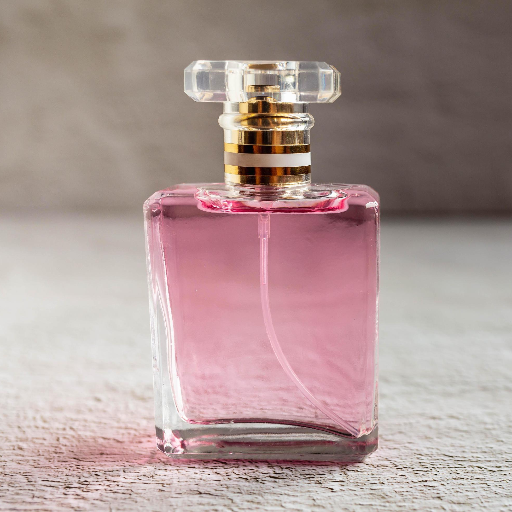
These are the five important qualities to consider when selecting the right perfume according to your likes and lifestyle:
1.Personal Preferences: Identify the scent families you connect with. Are fresh and citrus flavors more your thing, or are you more into warm and woody notes? Or are floral and sweet accords what speak to you? Sampling different options would help in narrowing down your choices.
2.Occasions and Seasons: Pick fragrances which are in harmony with the setting. Keep it light and fresh for daywear or summer; think strong and intense for formal occasions or winter.
3.Skin Chemistry: Perfumes react differently with an individual’s skin pH and biology. Always wear the perfume on your skin to check how the notes evolve with time.
4.Longevity and Concentration: Select the concentration that suits your need: long-lasting Eau de Parfum or lighter Eau de Toilette.
5.Price and Brand: Find out more about brands and prices to strike a balance between your budget and desired level of quality.
After considering the above, choosing a fragrance is easy: one that will complement your appearance and accentuate your personality.
Understanding Personal Style and Mood
The personal style and moodworthiness do have a big say in fragrance selection. Your style accounts for whether you gravitate towards more intense and colossal scents or subtler and more natural aromas. Take direction in the following example: A person with an elegant style tends to give preference to heavier notes such as oud or vanilla, whereas a person with a casual or sporty style probably gravitates towards fresh, citrus notes. Mood, on the other hand, places some emotional connection to a scent. Such uplifting fragrance would feel on days when you are ebullient: floral and fruity; and warm, woody scents when you want to feel calm or confident. Knowing these factors might help bring about the best synergy of your perfume and your personality so well that the scent will go with your attitude as much as it goes with your outfit.
Matching Pink Scents to Occasions
In picking pink scents for various occasions, my considerations revolve around the type of occasion and the feelings that I want to impart. For casual daytime outings or work settings, I prefer to go for the lighter floral or fruity pink perfumes because they smell fresh and easygoing. For any grandeur evening event or a romantic date, a complex virtuoso rose or musky pink undertone fragrance goes out and knows how to express elegance and class. Also, I keep the scent strength in equilibrium with the setting to avoid an intruder or express least interest. In anticipating the occasion with the fragrance, a wonderful synergy emerges that also sets forth the darkest tint of presence.
Tips for Selecting Your Signature Scent
1.Understand Your Personal Preferences: Take time to sit, relax, and really ponder what types of scents you normally lean towards: floral, woody, citrus, or spice notes, among many other options. This will be a fundamental basis for limiting your choices.
2.Consider Your Lifestyle and Activities: Opt for a scent that compliments your daily routine and your usual environment. A light, fresh scent would work well with an active lifestyle while stronger, prouder aromas would be apt for evenings or formal occasions.
3.Test Fragrances on Your Skin: When testing any perfume, one must always do so against the skin to understand how it reacts to their body chemistry. This is because oftentimes the way a fragrance interacts with your skin varies considerably from the way it smells in the bottle or on a test strip.
4.Evaluate Longevity and Sillage: Make sure to consider the longevity of a scent and sillage (a scent trail of sorts). A signature scent should really stand the test of time and maintain its presence whereby it is noticeable but not too fragrant.
5.Match the Fragrance with the Seasons: Choose lighter and fresher scents during spring and summer, while deeper, richer ones should go well during autumn and winter. This way, your signature scent will have its own personality to go along with seasonal changes.
Conclusion: The Timeless Charm of Pink Perfume Bottles
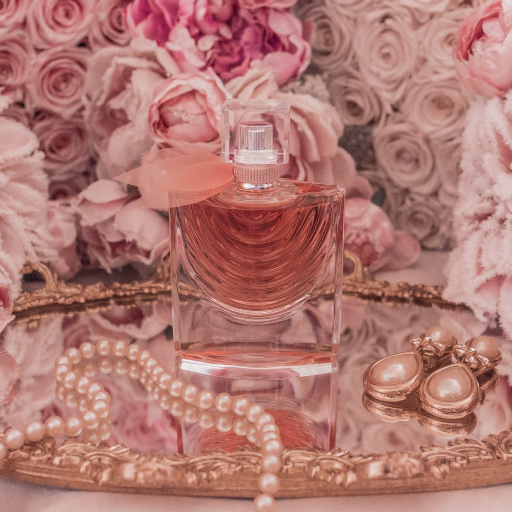
The timeless charm of pink perfume bottles lies in their ability to evoke elegance, femininity, and sophistication. Their delicate colors appeal to their senses even before the actual fragrance comes to their perception, thus placing pink bottles firmly in the paradigm of beauty and grace. In essence, pink bottles project the essence and aura of a mesmerizing fragrance, creating a beauty that resonates on both a sensory level and aesthetic level with the old-fashioned yet contemporary scent.
Celebrating Femininity and Elegance
Pink perfume bottles currently enjoy a reputation for femininity and refined elegance, something traceable to their design and cultural connotations. Historically pink has been associated with being romantic, delicate, and charming, making for an ideal color for fragrances which appeal to those attitudes. From streamlined and modern to elaborately vintage-inspired, such vessels accent the character of their perfumes by offering a tactile and visual extension of the scent’s identity.
Pink perfume bottles evoke a sense of nostalgia and ageless beauty, thereby further enhancing their appeal. Many luxury brands invest in the elaborate detail, gently flowing curves, and choice of materials that bring not just preservation to the fragrance but present an assemblage of art for collecting and adorning one’s vanity. Many modern bottles maintain this nostalgic beauty while incorporating innovative, sustainable packaging that upholds contemporary values.
The functional consideration behind the design of these bottles keeps the perfume within away from exposure to light and air. Here, utterly combining beauty with practicality. Thus, pink perfume bottles serve far more than mere function—they speak of an art form and of style that encapsulate the scent as well as the person who wears it.
The Future of Pink Bottles in Fragrance
The future of pink bottles for the fragrance industry is more than likely going to be shaped by sustainability and personalization through cutting-edge designs. As consumers continue to exert pressure for green products, the brands are instead pressured to give first choice to recycled or biodegradable materials for perfume bottles without skimping on looks. Truly, personalization will take center stage, involving technological nuances whereby consumers will be able to select and tweak their label designs so that their packaging will be as unique as the fragrance itself. In addition, breakthroughs in material science and manufacturing methods are applied in designing brands that are lightweight yet robust and classically beautiful, ensuring that pink bottles remain the icon even as they evolve with modern aspirations. These trends shift the scenario to one of cosponsoring functionality, sustainability, and artistic expression.
Reference Sources
-
Victoria’s Secret Pink by PINK Eau de Parfum – A detailed product description and reviews of a popular pink perfume bottle.
-
Buy Pink by PINK Eau de Parfum, Pink By Pink 1.7 Oz. – Insights into the fragrance’s appeal and pairing suggestions.
-
The Scent of Surrealism: The Perfumes of Schiaparelli – A look at artistic innovation in fragrance design, including iconic bottle designs.
-
Perfume bottle: circa 2000-2001 in Europe – A discussion on unique pink perfume bottle designs from the early 2000s.
Frequently Asked Questions (FAQ)
Q:What makes a pink perfume bottle special?
A:A pink perfume bottle often symbolizes femininity and elegance. The color pink is associated with romance and sweetness, making it a popular choice for women’s perfumes. Additionally, the design of a pink bottle can enhance the overall aesthetic appeal of the fragrance, making it a decorative item in any collection.
Q:How to choose the best perfume in a pink bottle?
A:When selecting the best perfume in a pink bottle, consider the fragrance notes that appeal to you. Floral scents, fruity aromas, and gourmand notes are popular choices. Sampling different eau de parfum sprays can help you find a scent that resonates with your personality and style.
Q:What are the common scent notes in floral pink perfumes?
A:Floral pink perfumes often feature notes such as rose, jasmine, and tuberose. These scents provide a fresh and romantic fragrance profile. Many pink eau de parfum options also blend these floral notes with fruity or sweet elements, creating a well-rounded scent experience.
Q:Are there long-lasting fragrances in pink bottles?
A:Yes, many pink bottles contain long-lasting fragrances. Look for eau de parfum options, which typically have a higher concentration of fragrance oils compared to eau de toilette. This concentration ensures that the scent lingers throughout the day, providing an enduring aromatic experience.
Q:What is the size of a typical pink perfume bottle?
A:Pink perfume bottles often come in various sizes, with 3.4 oz (100 ml) being a common choice. This size allows for ample use while still being compact enough for travel. Smaller bottles, such as 1 oz or 50 ml, are also available for those who prefer a more portable option.
Q:What is the significance of a decorative pink perfume bottle?
A:A decorative pink perfume bottle serves as more than just a container; it can be a statement piece. Many brands design their bottles to reflect the fragrance’s character, making them visually appealing. Collectors often seek out unique designs that enhance their vanity or perfume display.
Q:Can pink perfume bottles be refilled?
A:Some pink perfume bottles are designed for easy refilling, allowing users to replenish their favorite scents without purchasing a new bottle. Check if the bottle has a removable cap or dropper for convenient refilling. However, not all bottles are refillable, so it’s essential to verify before attempting to refill.

